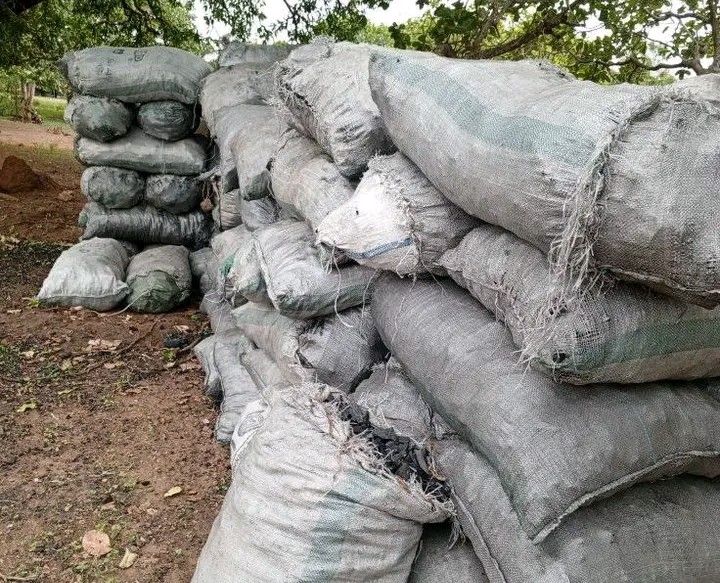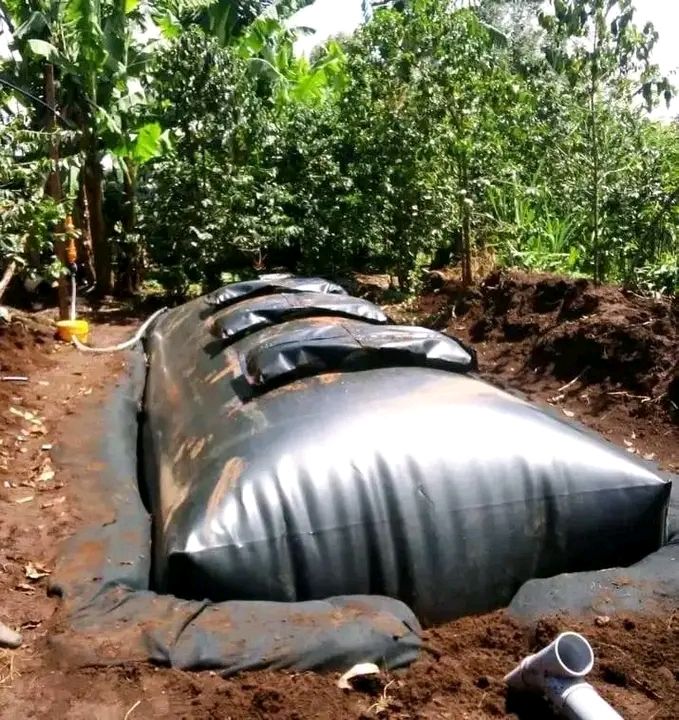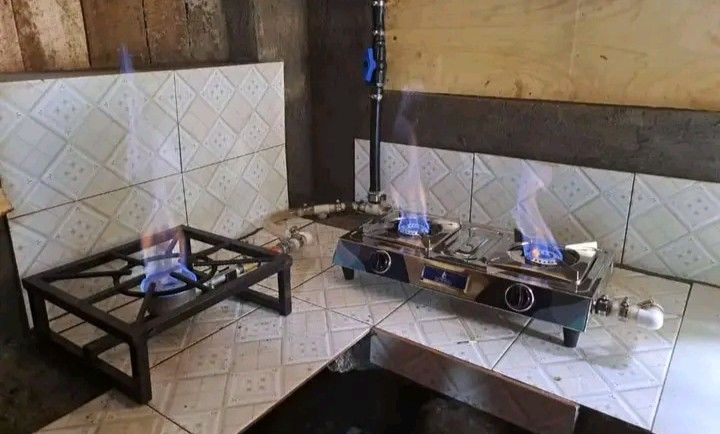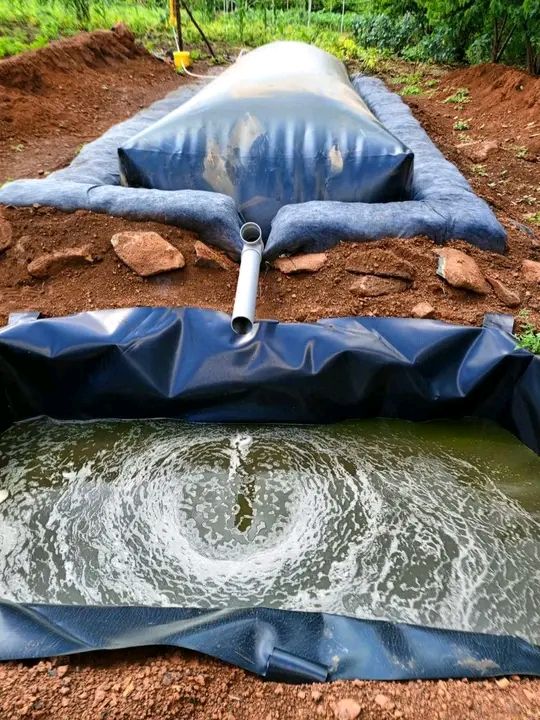I won’t lie, the Kenyan government has done so much in increasing forest cover in the country, and the tree planting sensitization alone has ensured that more and more people are planting trees. This will go along way in mitigating the effects of climate change and increasing the carbon footprint of our country. Kudos to the government. But at the same time, this government and the previous ones have done very little in terms of finding a clean, cheaper and reliable source of cooking for the Kenyan people.
This has left Kenyans, especially those in rural settings dependant on the traditional cooking sources like wood, charcoal, and paraffin that are both expensive and hazardous to their health. Both wood and charcoal are products of trees, meaning trees have to be felled for people to cook and this at the end of the day derails the progress we have all made in terms of increasing our forest cover as a country.
I live along the busy Nambale – Butula road and I can tell you without fear of contradiction that not less than three motorbikes each loaded with a minimum of three 90 kg sacks passes every hour headed to Nambale town and beyond. And like any other transporter of contraband, they’re always dangerously speeding. One time I asked a friend whether there will still be a tree standing in Busia by 2027 if this continued. And this is just transportation by motorbikes, we haven’t mentioned bicycles and vehicles. Not unless something is done, which I highly doubt, my fears of reduced tree cover in the region will be realized. A road block was erected at the River Sio brigde to arrest the culprits, but like all roadblocks in Kenya, they too quickly transitioned into money making schemes for a few individuals.

The problem is not with the charcoal burners, or the transporters of this highly demanded commodity, neither is with the end user. The problem rests solely on the government.
Gas cylinders are very expensive for most households to afford, and in cities such as Nairobi, that’s the reason we still have people cooking on paraffin stoves at this age and time. With the current economy, filling the cylinder is not easy. Currently a 6 kg cylinder goes for about Ksh. 3,190 and a 13 kg one goes up to Ksh. 6,500. President William Ruto among his many unfulfilled promises, cheaper cooking gas for Kenyans was one of them a while back. When the promise was made I was in Kajiado, and I remember how excited Kenyans were of a Kshs. 500 gas for a 6 kg cylinder from June 2023. Unfortunately the promise was never fulfilled.
Paraffin, which a number of people in informal settlements in urban areas are reliant on is unreliable since it’s prices are always fluctuating, and sometimes it’s unavailable and above everything else, it’s unhealthy.
Things have changed so much over the years in the country. A few years ago, someone cooking using charcoal was unheard of. Only special occasions such as Christmas called for such luxury. You see someone looking for charcoal, it is either for their kin in the city or for their iron box. But today every mama mboga is also selling charcoal on their kibanda because of the increasing demand. The rest of the villagers are using firewood which comprises of twigs, cut trees, maize stalks, dry cassava stems, and all the other farm rubbish and the result is unhealthy food and respiratory problems.

But there’s one green solution to this cooking problem: biogas.
The truth of the matter is that very few Kenyans are familiar with biogas production. And today if you did a study on how many people know what biogas is, you will be shocked at the result you will get. I was at a certain youth group learning of green business innovations and how youths can be engaged to better their lives and create employment to their fellow youths and a question was asked how many people are familiar with biogas production and the majority of the people present were ignorant. And that’s the reality on the ground, people, including the rich among us with the resources to install are ignorant about biogas and its benefits as a sustainable, clean source of energy.
Requirements of biogas installation
Biogas installation requires careful planning, appropriate site conditions, and adherence to technical, environmental, and safety standards. Below are the key requirements for a biogas installation:
- Raw Materials (feedstock)
Organic waste: Cow dung, poultry litter, pig manure, kitchen waste, agricultural residue, or sewage.
Moisture content: Ideal slurry should have about 8–10% total solids.
Availability: Continuous and sufficient supply of feedstock is essential.
- Location and Site Conditions
Space: Sufficient area for the digester, gas holder, and storage tanks.
Proximity to feedstock: Close to the source of organic waste e.g., cattle shed or kitchen.
Sunlight & temperature: Preferably in a warm climate; mesophilic digestion requires 30–40°C for optimal performance.
Water availability: Needed for preparing slurry and cleaning.
Drainage: Proper drainage system to avoid water stagnation.

- Design and Construction
Type of digester: floating drum; fixed dome; balloon type; bag digester, for small-scale use.
Material: RCC, bricks, ferrocement, or HDPE, depending on size and location.
Gas storage: Built-in (fixed dome) or separate gas holder (floating drum).
Inlet and outlet: Slurry feed and spent slurry discharge points.
Safety: Pressure release valves and flame arrestors to prevent accidents.
- Technical Equipment
Mixer or stirrer for large-scale plant.
Piping system: For gas transport from digester to usage point.
Gas appliances: Biogas stove, lamps, or generator for electricity generation.
Slurry handling: Pumps or channels to manage effluent slurry.
- Legal and Regulatory Compliance
Environmental clearance for large plants.
Safety standards: As per local regulations e.g., pressure, fire safety.
Building permits: As required by local authorities.
Odor and waste management: To avoid nuisance to the neighborhood.
- Operation and Maintenance
Regular feeding: Consistent input of feedstock.
Slurry removal: Periodic removal and use/disposal of digested slurry.
Leak detection: Check gas pipelines regularly.
Monitoring: pH, temperature, gas production rate.
Operation costs: Labor, maintenance, minor repairs.
Challenges
Let’s look at some of the challenges to biogas production in the country. The biggest one is finances and cost. The initial investment is the biggest challenge to most households in our community. The cost will depend on the size and type of digester. Currently the standard mode digester is around 80k while the XXL model digester costs around 150k in Kenyan shillings.
Here is where the government comes in if it really wants to help its people and prevent the destruction of forests. Introduce subsidies or financial incentives like what other countries are doing for renewable energy projects. This will lower the prices of digesters and the installation of biogas which will encourage more people to get involved in biogas production and enjoy its benefits.

Benefits of biogas production
Biogas production offers numerous environmental, economic, and social benefits. Here’s a breakdown of the key advantages:
- Environmental Benefits
- Waste Reduction – Converts organic waste e.g., food scraps, animal manure, agricultural residues into usable energy and fertilizer, reducing landfill use and pollution.
- Greenhouse Gas Mitigation – Reduces methane emissions from decomposing waste and offsets fossil fuel use, lowering overall greenhouse gas emissions.
- Renewable Energy Source – Biogas is a sustainable, clean source of energy that can replace fossil fuels for cooking, heating, electricity, and transportation.
- Soil Health Improvement – The byproduct (digestate) is a nutrient-rich organic fertilizer that enhances soil quality and reduces chemical fertilizer use.
- Economic Benefits
- Energy Cost Savings – Biogas can reduce dependence on purchased fuels, lowering energy bills for households, farms, and businesses.
- Job Creation – Biogas plants generate employment in construction, operation, maintenance, and waste collection.
- Income Opportunities – Surplus electricity or biogas can be sold back to the grid or local markets, creating additional revenue streams.
- Reduced Fertilizer Costs – Digestate lowers the need for synthetic fertilizers, saving money for farmers and improving profit margins.

- Social Benefits
- Improved Sanitation – Helps manage organic waste hygienically, reducing the risk of disease from open dumping or improper disposal.
- Energy Access in Rural Areas – Provides off-grid energy solutions for remote communities lacking access to traditional energy infrastructure.
- Cleaner Cooking Alternatives – Reduces indoor air pollution from traditional biomass fuels, improving respiratory health, especially for women and children.
- Educational and Awareness Opportunities – Promotes environmental awareness and sustainable practices at community and institutional levels
The aim of this post is first of all is to sensitive my fellow youths, my community, Kenyans and our government on the production of biogas as an alternative to the energy crisis in the country. We are constantly crying about high energy prices in the country, but we have here a solution that not even the energy CS ever mentions. To lower the cost of living in this country, this are some of the things we should be considering. The government has a responsibility to make digesters cheaper and sensitize Kenyans on the benefits of biogas. Otherwise all the tree planting efforts will go to waste because of charcoal burners and wood cutters.

Disclosure: This banner contains an affiliate link. I may earn a commission if you purchase through it, at no extra cost to you.


Pingback: Napier Grass: Establishment, Management and Utilization - Money in Agribusiness
Pingback: Charcoal Burning: A Silent Health and Environmental Threat in Busia - Money in Agribusiness